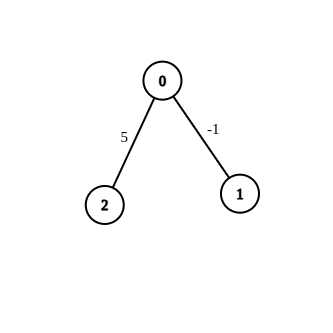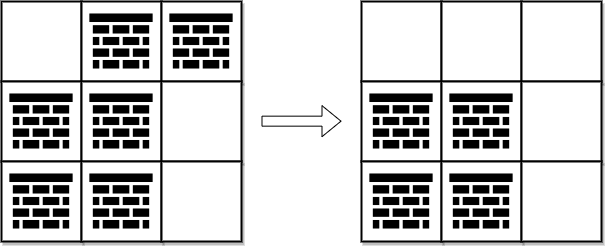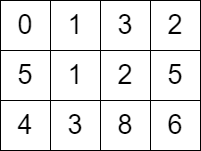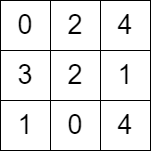修改图中的边权
1 <= n <= 1001 <= edges.length <= n * (n - 1) / 2edges[i].length == 30 <= ai, bi < nwi = -1或者1 <= wi <= 10^7ai != bi0 <= source, destination < nsource != destination1 <= target <= 10^9输入的图是连通图,且没有自环和重边。
给你一个 n 个节点的 无向带权连通 图,节点编号为 0 到 n - 1 ,再给你一个整数数组 edges ,其中 edges[i] = [ai, bi, wi] 表示节点 ai 和 bi 之间有一条边权为 wi 的边。
部分边的边权为 -1(wi = -1),其他边的边权都为 正 数(wi > 0)。
你需要将所有边权为 -1 的边都修改为范围 [1, 2 * 10^9] 中的 正整数 ,使得从节点 source 到节点 destination 的 最短距离 为整数 target 。如果有 多种 修改方案可以使 source 和 destination 之间的最短距离等于 target ,你可以返回任意一种方案。
如果存在使 source 到 destination 最短距离为 target 的方案,请你按任意顺序返回包含所有边的数组(包括未修改边权的边)。如果不存在这样的方案,请你返回一个 空数组 。
注意:你不能修改一开始边权为正数的边。
示例 1:

```txt
输入:n = 5, edges = [[4,1,-1],[2,0,-1],[0,3,-1],[4,3,-1]], source = 0, destination = 1, target = 5
输出:[[4,1,1],[2,0,1],[0,3,3],[4,3,1]]
解释:上图展示了一个满足题意的修改方案,从 0 到 1 的最短距离为 5 。
```
示例 2:

```txt
输入:n = 3, edges = [[0,1,-1],[0,2,5]], source = 0, destination = 2, target = 6
输出:[]
解释:上图是一开始的图。没有办法通过修改边权为 -1 的边,使得 0 到 2 的最短距离等于 6 ,所以返回一个空数组。
```
示例 3:

```txt
输入:n = 4, edges = [[1,0,4],[1,2,3],[2,3,5],[0,3,-1]], source = 0, destination = 2, target = 6
输出:[[1,0,4],[1,2,3],[2,3,5],[0,3,1]]
解释:上图展示了一个满足题意的修改方案,从 0 到 2 的最短距离为 6 。
```
提示:




